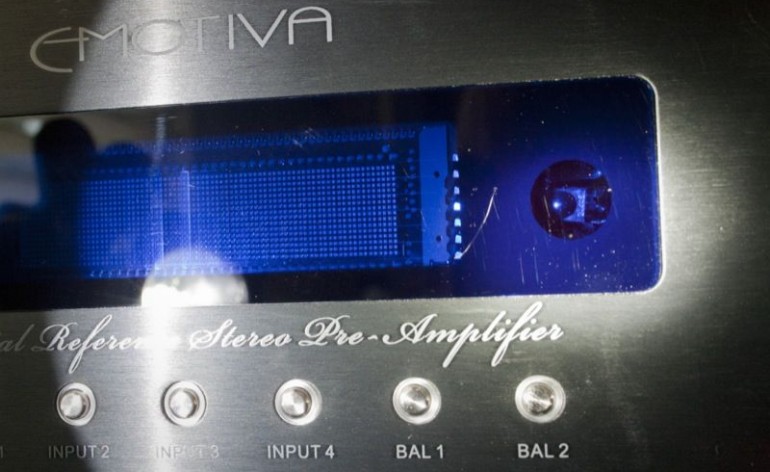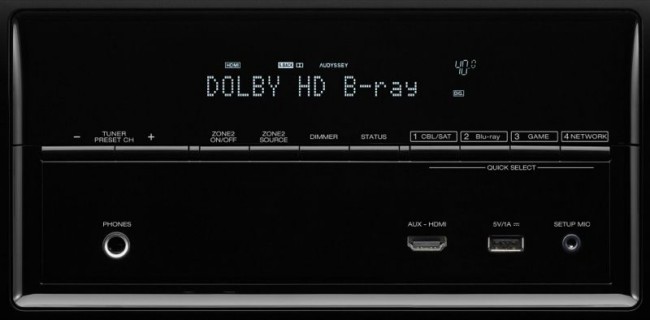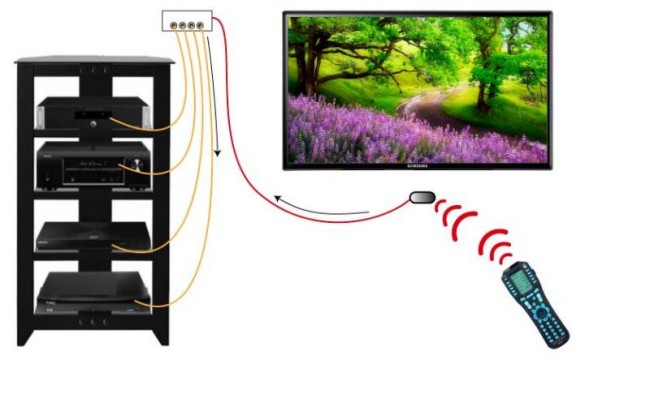Using IR Emitter and Extender Systems in Your Home Theater
A remote control is useful, but your average remote requires you to be in a line-of-sight position with your AV equipment. Furthermore, many remotes simply don’t have much off-axis ability and, as such, commands go unrecognized. This is a big deal if you’re using “Favorites” that send multiple keypad or digit commands to your set-top box in order to recall a particular channel by name or icon. Another problem arises when you have some of your gear located in a place that’s not in line with your television. I’ve got three locations in my home where this is an issue. Using IR emitter and extender systems in your home theater solves these problems.
First, take my living room. I have a television mounted above an inactive fireplace. My equipment rack, however, is located in the corner of the room. In my home theater, my equipment rack is located in a closet, making it impossible to reach with a standard remote control. And, finally, my bedroom has a wall-mounted television, but all of my AV equipment is located in a walk-in closet.
So what do you do? As it turns out, there may be a simple, low-cost solution in the form of an IR emitter and detector/receiver.
Using IR Emitters and an IR Receiver in Your Home Theater
Placing and using IR emitters and a receiver in your home theater will allow you to point your remote control(s) at a single location that can collect or receive all of the commands and forward them to a hard-wired emitter located near your gear. It is this sort of basic system that can revolutionize and streamline your remote control of equipment. It also gives you the flexibility to put things where you want them, rather than having to arrange your equipment simply so that everything can be reached by your remote—universal or otherwise.
An IR receiver is a simple device that accepts a wide range of infrared signals and sends them along a hard line to an emitter. These are typically active devices, so you’ve got to have power somewhere—typically at the other end where the IR signals are once again recreated (emitted) for the benefit of your AV equipment. Many IR emitter/receiver systems come with the ability to connect a single receiver and multiple emitters. In this way, you can be very specific with reaching every piece of gear you own.
Locating the IR Receiver on Your AV Equipment
For many pieces of gear, locating the IR receiver is no big deal. You can look for a circular piece of glass on the front of a device that hides the receiver just below. On other equipment, however, it may be a bit harder, making using IR emitters a bit tougher. On some gear, a single larger piece of glass may be used for the LCD display. In this case, use a flashlight to shine through the front panel display and locate the IR receiver underneath. You’ll be able to locate it because it will be separate from the actual LCD or VFD panel. Once you know where this is located, that’s where you’ll put the IR emitter (blaster) so that it can “talk” to that particular piece of AV gear.
Hooking It All Up and Using IR Emitters and a Receiver
Using IR emitters and a receiver and getting it working isn’t difficult. An overview of the process is as follows:
- Place the primary IR receiver in a location where it can accept IR signals easily from the main remote control(s)
- Ensure the IR receiver is hardwired to the emitter box, which is usually powered and located alongside your AV equipment (this ensures that you only have to run a single cable out to your living room or theater space).
- Connect the IR emitters (sometimes referred to as “IR blasters”) to the emitter box.
- Affix each IR emitter to the proper location on each piece of gear (directly in front of the equipment’s IR receiver). If your system came with an emitter that is meant to be “blasted” from a distance, then place it (or if more than one, “them”) in a suitable location so they can reach your AV equipment.
- Test and adjust as needed
Using IR emitters and a detector (receiver) in your home theater can really simplify how you control your AV devices. There’s no reason to have to jump to a fancy RF remote system if all you need is to relocate your remote sensor in a room…of course, an RF remote control system is a whole other step up and you should probably check that out as well if you find that rearranging your line of sight issues still isn’t accomplishing your goals.






Do all remotes output ir signals?
Technically, no. We know of a handful that use a hub system or other ways of emitting the IR signal. But most remotes, and all standalone remotes, do.
Suddenly our TV will not have any sound at all when we turn it on with the remote, but the speaker system throughout the house will work. The only difference is whether we chose “listen” or “watch” on the remote. Is this a TV issue ( replace the TV?) or an emitter issue ( maybe something got knocked loose when dusting?).
Without more information, we can’t really help you here.
My home theater receiver has an IR IN input located on the back of the receiver. I tried attaching a standalone IR receiver that had a 3.5 mm connection to this input but it did not work. What kind of IR receiver is supposed to be used? Do you have recommendations? I am aware of the IR extenders/blasters such as described in this article but I am interested in utilizing the existing IR In connection on my receiver.
I have an STB, SR Receiver, and several other devices all in a closet. The TV and (soundbar which connect by HDMI, TOS and (Bluetooth for Streaming Podcasts)) are in another room. I have a new Universal Remote and an older UR RF Blaster. The (Samsung TV) has its own IR Receiver, so Why does the TV, receiver, and other items have a hardwired IR port? Should I just be able to run 3.5mm cables to the 6 port hub and program activities as to which device is the transmitter and which is the receiver? Also, Is there is more than one frequency used by IR (compatibility Issue)?
In theory, yes. Hub-based systems often had the ability to assign their 3.5mm ports to a specific device. None that I know of had 6 ports however.
This can happen. It is usually rare unless you are using multiple devices from same manufacturer like two different Sony Blu-ray players. But it can happen.
Question; I’m looking at buying a Amazon Fire TV 50″ Omni QLED Series 4K UHD smart TV, Dolby Vision IQ, Local Dimming, Fire TV Ambient Experience, hands-free with Alexa but it says that th IR Emitter is not included do I need to buy one to everything to work on this TV